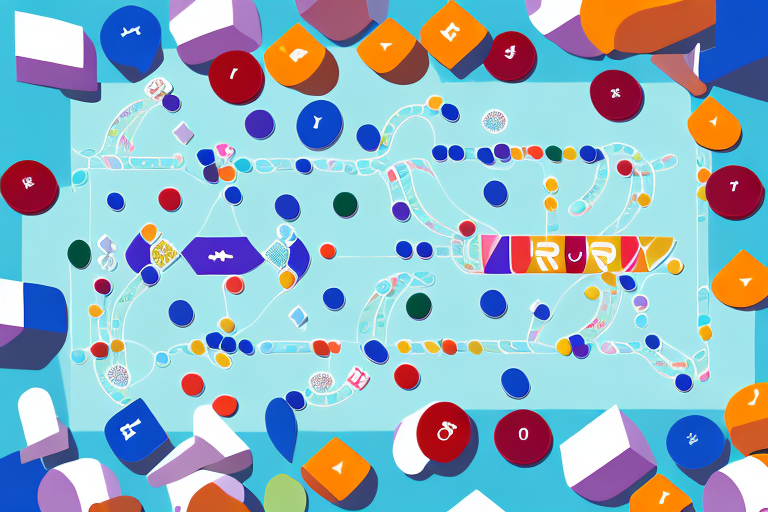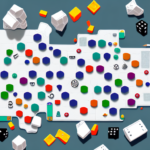How to Implement Gamification Elements for Maximum Engagement
Gamification remains a leading strategy to boost engagement and motivate users to take specific actions. With companies increasingly investing in gamification to attract and retain users, understanding how to implement it effectively is crucial. This comprehensive guide explores best practices for integrating gamification elements to achieve maximum engagement.
What is Gamification and Why It Matters?
Gamification involves embedding game-like elements such as scoring systems, badges, and rewards into non-game environments like marketing campaigns, employee training, and educational programs. The objective is to make learning or task completion more engaging by leveraging psychological principles that enhance motivation.
An effective gamification strategy offers both tangible benefits, like increased sales and customer retention, and intangible benefits, including brand loyalty and employee morale.
Moreover, gamification fosters a sense of community and collaboration among participants. By introducing competition and cooperation, it encourages individuals to work towards common goals, share knowledge, and support each other—valuable traits in both educational and corporate settings.
The Psychology Behind Gamification: Understanding Human Motivation
The success of gamification hinges on understanding human motivation, primarily through models like Self-Determination Theory (SDT) and Maslow's Hierarchy of Needs.
Self-Determination Theory (SDT)
SDT identifies three fundamental psychological needs: autonomy, relatedness, and achievement. Gamification elements can cater to these needs by providing users with control, social connections, and goal attainment opportunities, thereby enhancing engagement.
Maslow's Hierarchy of Needs
According to Maslow, human needs are hierarchical, starting from basic physiological needs to self-actualization. Gamification can target various levels by offering incentives that align with these needs, making the engagement more compelling.
It's essential to recognize that gamification is not universally effective. Different individuals are motivated by different factors—some may thrive on competition, while others prefer collaboration. Tailoring gamification strategies to the target audience's preferences ensures a more personalized and effective engagement.
Steps to Implement Gamification Elements Successfully
A successful gamification strategy requires meticulous planning aligned with business objectives and audience needs. Follow these key steps:
1. Define the Objectives
Identify what you aim to achieve with gamification—whether it's increasing sales, improving customer engagement, or enhancing employee productivity. Clear objectives ensure that the strategy aligns with overall business goals.
2. Understand the Audience
Research the target audience's preferences, motivations, and behaviors. This understanding helps in designing gamification elements that resonate and effectively incentivize engagement.
3. Select the Gamification Elements
Choose elements that fit the audience and context, such as badges, leaderboards, points, levels, and rewards. The right mix depends on the specific goals and user characteristics.
4. Create a Rewards System
Design a rewards system that reflects user preferences and offers a balance between challenge and achievability. Rewards should be valuable enough to motivate continued engagement.
5. Design the Interface
Ensure the interface is intuitive, simple, and visually appealing. Users should easily navigate and interact with gamification elements without confusion.
6. Test and Iterate
Implement the strategy and monitor user engagement metrics. Use feedback and data to refine and optimize the gamification elements continuously.
7. Provide Feedback
Offer users regular feedback on their progress through progress bars, notifications, or personalized messages. Feedback reinforces achievements and keeps users motivated.
Choosing the Right Gamification Elements for Your Audience
Selecting appropriate gamification elements is critical for effectiveness. Consider the following factors:
Audience Preferences
Different demographics respond differently. Younger audiences might prefer badges, while older users might value points and leaderboards. Additionally, personality traits play a role—competitive users may thrive on leaderboards, whereas social users enjoy badges reflecting their interactions.
Context of Use
The environment in which gamification is applied also influences element selection. Educational settings may benefit from progress bars and levels to motivate learning, while fitness apps might use challenges and rewards to encourage regular exercise.
Conducting research and surveys helps in understanding the audience's preferences, enabling the customization of gamification elements to suit their needs effectively.
Creating a Reward System to Boost Engagement
The reward system is the cornerstone of any gamification strategy. Here’s how to design one that effectively boosts engagement:
Provide Tangible Rewards
Monetary incentives, gift cards, or access to premium content can serve as strong motivators for user engagement.
Offer Intrinsic Rewards
Recognition, feedback, and a sense of achievement appeal to users motivated by internal satisfaction rather than external rewards.
Create a Sense of Progression
Design elements that allow users to see their progress and understand the steps needed to achieve the next level or reward. This progression keeps users engaged and motivated to continue.
Designing a Winning User Interface for Your Gamification Strategy
A well-designed interface is essential for the success of a gamification strategy. Consider the following tips:
Keep It Simple
A simple and intuitive interface with clear navigation and minimal clutter ensures that users can interact with gamification elements effortlessly.
Use Clear and Consistent Visual Cues
Consistent use of colors, shapes, and sizes helps users easily identify different levels, achievements, or rewards. Consistency enhances user understanding and interaction.
Measuring the Success of Your Gamification Strategy: Key Metrics to Track
Evaluating the effectiveness of your gamification strategy is crucial for ongoing optimization. Key metrics include:
User Engagement
Track the number of users interacting with the platform or completing tasks to assess how well gamification elements are driving engagement.
Completion Rates
Monitor the percentage of users who complete tasks or reach goals to gauge the motivational impact of your gamification strategy.
Avoiding Common Pitfalls in Implementing Gamification
Implementing gamification can be challenging, and avoiding common mistakes is essential for success:
Using Gamification Without Understanding the Audience
Ensure that gamification aligns with the target audience's preferences and behaviors. Misaligned elements can fail to motivate and engage users.
Overcomplicating the Gamification Elements
Simplicity is key. Complex or multi-layered gamification elements can confuse users, leading to disengagement.
Lack of Feedback
Provide timely and adequate feedback to keep users informed about their progress and achievements. Lack of feedback can demotivate users.
Case Studies: Successful Examples of Gamification in Action
Numerous industries have successfully implemented gamification strategies. Here are some notable examples:
Deloitte Leadership Academy
The Deloitte Leadership Academy utilizes gamification elements like leaderboards, badges, and rewards to motivate users to complete learning modules. This approach has led to a significant increase in user engagement.
My Starbucks Rewards
The My Starbucks Rewards program incorporates points, rewards, and tier systems to encourage customer purchases and platform engagement, resulting in a substantial boost in sales.
Future Trends in Gamification and What to Expect
Gamification continues to evolve with emerging trends shaping its future:
Virtual and Augmented Reality
VR and AR technologies enable more immersive gamification experiences, enhancing user engagement and motivation.
Personalization and Customization
Tailoring gamification elements to individual user preferences and behaviors will become increasingly important for effective engagement.
Tips for Creating a Long-Term Successful Gamification Strategy
Ensuring the long-term success of a gamification strategy requires continuous improvement and adaptation:
Regularly Review and Update Gamification Elements
Frequently assess and adjust gamification elements to maintain their effectiveness and alignment with user preferences.
Track and Measure Performance Metrics
Continuously monitor performance metrics and use the data to refine and enhance gamification elements.
Encourage User Feedback
Solicit and incorporate user feedback to better understand preferences and improve gamification elements.
Offer Unique Rewards
Provide exclusive and unique rewards to motivate users to engage more deeply with the platform.
Collaborate with Users
Involve users in designing and implementing gamification elements to foster a sense of ownership and enhance engagement.
Incorporate Social Elements
Integrate social features like user-generated content and social sharing to build a community and further enhance engagement.
In conclusion, gamification is a potent tool for enhancing engagement and motivation across various contexts. A successful gamification strategy requires a well-structured plan that aligns with both the target audience's preferences and the overarching business objectives. Continuous optimization, user collaboration, and regular feedback are essential for maintaining a long-term effective gamification strategy.




















